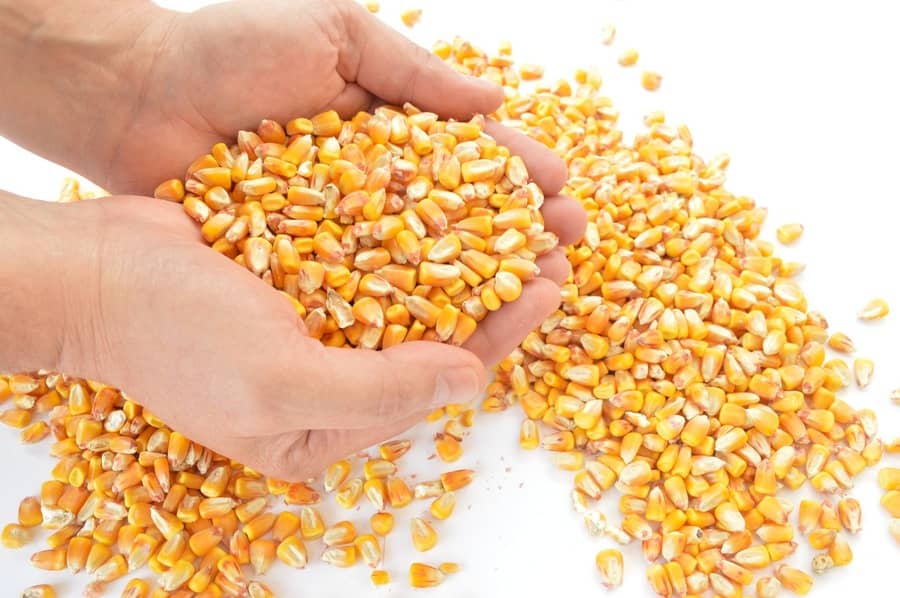Porto Alegre, June 27, 2022 – After a week of strong highs supported by the heat wave that emerged this June, the market had a week of sharp lows in the face of the forecast of declining temperatures and the resumption of rains. This was the central point of the downward movement in corn prices on the CBOT. Other factors also weighed on this price movement over the week, which even scared the Brazilian market. However, the key point of all the fundamental guidance for prices is still centered on the weather in the pollination period of the US crop, as well as in the planted area report to be released by USDA on the 30th.
Last week’s bearish movement was triggered by two fundamental factors:
A wheat crop estimate above the record expected for Russia;
– A surprising reversal from high temperatures to below-normal temperatures for this week.
The week started with this movement that put pressure on wheat and corn in Chicago. However, last Tuesday, new information accelerated this movement, such as:
– Widespread panic about a possible global and US recession that would cause a scenario of decline in both demand and commodities prices. We must reflect that no recession comes in two or three months and that panic is generated by the positioning of funds and investors in commodities at high prices. Any decision to reverse these positions implies aggressive lows in the segment;
– Wheat dropped below USD 10/bushel for the first time since Feb/22. Northern Hemisphere crops begin to be reaped next month, including a Russian record crop. China has one of its worst wheat crops and will certainly buy from Russia and perhaps Ukraine if shipping is possible in the second half of the year;
– Maps that had shown a drastic reversal of the heat wave now also place above-normal rainfall across the Midwest for the next two weeks. If the heat wave returns, there will be a balance of rainfall, which looks good for crops;
– Indonesia announced it will release 1.5 mln tons of palm oil for exports, which ended up bringing down soyoil prices and consequently the soy complex prices;
– Oil, pressured by the psychological bias of a potential recession, got back closer to USD 100/barrel, after reaching USD 122 at the beginning of the month. This puts pressure on the ethanol market and, consequently, on the corn market;
– Possible expectations of US consulting companies and brokers for the acreage report to be released by USDA on the 30th. With prices at the highest levels on the eve of an acreage report, it seems that few wanted to keep open positions and ended up generating an environment of profit-taking last week;
– Entry of the Brazilian second corn crop and more aggressive sales by Brazil, which may reduce the flow of US exports in the coming few weeks.
Thus, it was a week of lows, after a week of sharp highs. The climate reversal, or at least its trend, generated the initial movement to drop prices on the CBOT. Then, the tensions in the commodities market, sharp lows in wheat, the arrival of the Brazilian second crop, and the acreage report on the 30th boosted panic and put strong downward pressure on prices. The market, which had operated above USD 7.00/bushel for the September contract, came close to the USD 6.50 support, recovering part of the losses at the close of the week.
Owing to the dry and hot week across the Midwest, this Monday’s crop condition report may bring new losses in the percentage of good to excellent crops. Last week, this percentage dropped from 72 to 70%, still well above 2021, when productivity set a record. If there is a drop to 68% this Monday, it cannot be considered abnormal and worrying. It will be worrisome if the weather changes its bias for rainfall again and puts below-normal rainfall for the first week of July at the start of pollination in the Midwest. Thus, there is still no sign of loss of production in the United States, especially because the drought in 2021 was accentuated and yields were record-breaking. But there is no safe crop. Until August we will still depend on this weather symptom to define the 2022 production.
Agência SAFRAS Latam
Copyright 2022 – Grupo CMA

